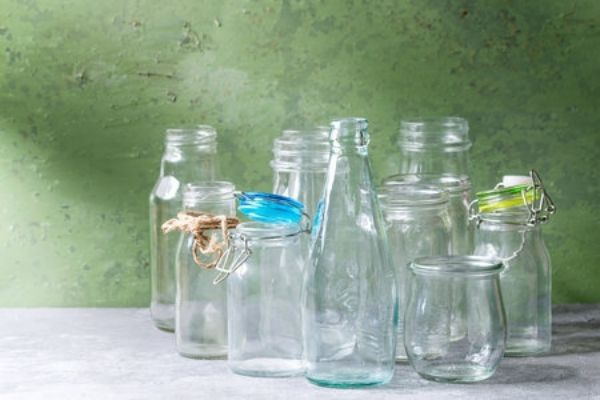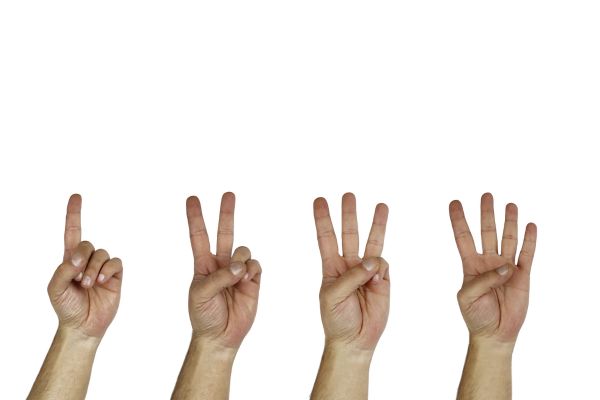Glass is an essential material in our everyday lives. It brings light to our day, protects us from the elements, provides storage for our food and drink, and transports information through fiber optic cables. Glass is very important because it can be reused over and over and also recycled over and over again. Glass recycling, however, is not all that straightforward, so read on to find out more.
Over the thousands of years, we have been using glass we have managed to shape it to our many needs. We literally shape it into objects, but we also change its properties through physical processes or by adding chemicals. If you want to know more about common glass types, go to What glass is made of?.
These days glass could be referred to as the “good guy” of the packaging world. With all the issues around plastic waste, glass is seen as a much better option for the world. One of the main reasons glass is touted as the “good guy” is how easy it is to recycle.
Quick Navigation
Why should you recycle glass?
Even though the ingredients of glass are abundant, they still need to be extracted from the earth for use. This means quarrying into the landscape and changing the environment. Plus, this process uses a lot of energy, at least a lot more than recycling glass.
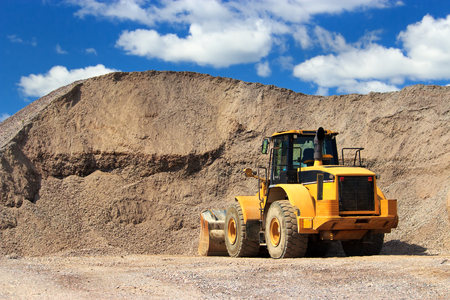
By recycling glass, you are saving energy and therefore reducing overall emissions into the environment. Simultaneously, you are helping to reduce the amount of waste going to landfill.
Glass can take up to 1 million years to degrade, so even though it will not damage the environment, it can build up.
Glass is said to be infinitely recyclable, and some types of glass are. However, many different glass types are not recyclable, or at least not within the current systems.
All the chemicals we add and the changes we make to manipulate glass for our needs often make recycling difficult. For example, once produced, heat-treated glass melts at a higher temperature and so cannot be recycled in regular recycling facilities.
It’s not all doom and gloom, though. There is still a lot of glass that can be recycled, and this type of glass makes up a good percentage of the more disposable glass items that we consume, such as packaging. Hopefully, with time, options might become more readily available for the types of glass that are difficult to recycle.
How is glass recycled?
Glass recycling starts with its collection and ends with the use of that glass in a new product. Glass is generally collected in one of two ways. Either through curbside recycling programs or at bottle deposits or bottle banks.
The collection through curbside recycling is more often via a single-stream recycling system. This is where paper, plastic, glass, and metal are all thrown together and then separated at an MRF. If a single stream collection method is used, the glass will need to be separated from the other materials.
Some places have a multi-stream recycling system where the glass is kept separate from the beginning. In this process, as in bottle deposits, the glass waste is already separated from the other materials.
The process goes like this:
- Collection – glass waste is collected through curbside recycling and transported to an MRF (Materials Recovery Facility).
- Sorting – At the facility, glass is sorted into three types: clear, brown, and green.
- Processing – The glass is crushed into smaller pieces called cullet. This is then sent to a glass beneficiation plant.
- Beneficiation – This process removes any remaining contaminants, such as small pieces of metals or plastic.
- Melting – The cullet is crushed further and then melted.
- Molded or blown – the glass is then molded or blown into the final product.
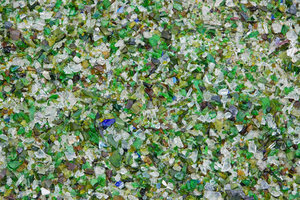
It is generally a relatively simple process. However, along the way, there are a few steps that can be problematic.
Contamination
A big issue with glass recycling is contamination. The glass recycling process described above only works if the same type of glass is separated for processing. Generally, this process will only accept bottles and jars.
Other types of glass, such as tempered or laminated glass, cannot go into the same process as the glass bottles and jars. These other types of glass have been changed, either chemically or physically.
Often, particularly for heat-treated or tempered glass, they now have a much higher melting point than standard glass. That means it will not melt in the furnace. This can lead to defects in recycled glass products leading to them breaking more easily.
Recycled glass actually melts at a lower temperature than the original materials, which is why so much energy is saved when it is used.
Coloured glass
Glass retains its color after it has been recycled, so different colored glass needs to be separated before processing.
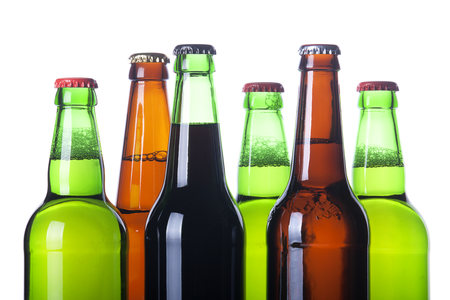
The most common type of glass bottle is clear, then brown bottles and a smaller amount of green, blue, and other colors.
Why some councils don’t collect glass
Some local authorities in America and Australia have removed glass from their curbside pickup. Glass can cause problems in the single-stream recycling process by contaminating other recyclables. For example, small glass shards can become embedded in paper and cardboard. This can render the paper or plastic no longer recyclable and lead to it being sent to a landfill.
Taking glass out of the curbside recycling only really works if there is an alternative process. There have also been some difficulties with the low value of recycled glass cullet and the lack of a nearby market. Glass is relatively cheap to produce from raw materials, so it can be difficult to justify recycling if the glass needs to be transported a long distance.
How to recycle glass
The basics
One of the most important things you can do is check with your local authority to see what the rules are in your area. This might be your local council, or it might be the nearest bottle bank. They can have different rules, so it is important to check.
What to put in curbside recycling
Only put glass bottles and jars in your curbside recycling bin. These are made of soda-lime glass and annealed glass.
If you are can’t figure out what type of glass it is, then it might be best to put the item into your landfill bin rather than contaminate the whole batch of recycling. A good article to read is, Are you wish cycling? 5 ways to help you break your habit.
Follow these steps:
- For curbside recycling, check with your local authority.
- Remove metal or plastic lids or caps.
- Rinse the container (place it in your dishwasher with your other dishes to save water).
- Do not break the glass. Leave it intact.
- Be sure to leave out the glass types listed below.
Things to leave out of curbside pickup
Lead glass, heat-treated or tempered glass, borosilicate or aluminosilicate glass, or laminated glass cannot be placed in your curbside recycling.
Common everyday products made of these types of glass include:
- Window glass
- Drinking glasses
- Mirrors
- Heatproof or oven containers such as Pyrex or Corning Ware
- Light globes
- Laboratory and medical glass
- Glass fibre in insulation or fibreglass
- Ceramic Coffee mugs
- China, ceramics, or stoneware
When it comes to green, brown, and clear glass bottles and jars, these can be placed in curbside recycling bins provided by most councils.
What about drinking glasses?
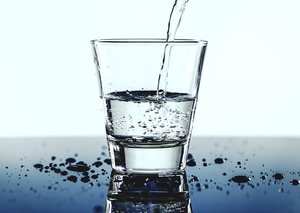
The biggest problem with the different types of drinking glasses in our homes is that it is nearly impossible to figure out what type of glass they are made of. Even in researching this article, I had a lot of trouble finding information on what types of glass are used for everyday drinking glasses.
Many of these glasses are likely made of soda-lime glass; however, many are also heat-treated or made of lead crystal. Given how hard it is to know which type of glass they are, the recycling centers would prefer to keep them out of the curbside bin.
Check with your local council and maybe look into specialist recycling companies if you want to get rid of window glass or mirrors, for example.
What about broken glass?
If glass is already broken, we are often asked not to include this in our curbside recycling bin. This seems weird because it is generally understood that glass will break up during the process anyway.
This is absolutely true, but if the glass is already broken, it will usually break up even more. The tiny pieces are often too small for sorting and can cause more contamination in the other recyclable material, such as cardboard and plastic.
How to recycle at bottle banks or container collection points

Many people have access to a glass bottle bank or container collection point near where they live.
A container deposit scheme or bottle bank is a program that collects bottles, usually glass but sometimes they include plastic and metal, and refunds you a small amount of money for each bottle. The extra 5 to 10 cents that you get refunded was included in the original purchase price.
If you have access to a program like this you should use it as much as possible. This type of collection reduces the number of contaminants when glass is recycled. Be sure to check out their guidelines on what you can and can’t recycle at that facility.
How to recycle other types of glass?
There are often specialist recyclers that will take other types of glass. For example, if you are renovating, there may There are often specialist recyclers that will take other types of glass.
For example, if you are renovating, there are many salvage yards that buy and sell old windows with the frame. If you cannot find anyone who will take it there may be recycling services available via your builder.
Some companies will recycle your car’s windshield when they replace it. It’s a great idea to ask this question if you need to get your car windshield replaced.
If you are disposing of glass that cannot be recycled and it’s still in good condition, consider donating it to charity rather than throwing it out. This could include sets of drinking glasses, an oven dish that you no longer use, or a glass vase.
Old light fittings might be attractive to someone else if they are still in one piece. Sometimes they can even be valuable if they are very old.
Finally, be sure to check out local collection options for light globes. Fluorescent light globes in particular (including “fluoro tubes” and the energy-saving spiral-shaped globes). These contain small amounts of mercury and must be disposed of carefully. The other materials, such as glass, will often then be recycled too.
What happens to my recycled glass
As long as it is of high-quality, recycled glass makes its way back to the factories mixed with raw materials. Gallo Glass Company, for example, uses 50% recycled glass in their new products.
Other uses include:
- Crushed glass can be used in concrete
- Roads
- As a flux in brick manufacture
- Glass countertops and tiles
- Filler in paint and plastic
- Abrasives for sandblasting etc.
- Decorative glass aggregate
- Fiberglass insulation products
Of course, you can always upcycle the glass into a mosaic or make it into something else at home; just be careful not to cut yourself!
The Summary
It is important to realize that not all glass is made equal. We make many different types of glass, and not all of this glass can be easily recycled. Here is the summary:
Bottle bank
If you have access to a bottle bank or container deposit, then go ahead and use it. It is the best option for glass recycling. Be sure to check out the rules on their website or give them a call.
Curbside recycling
Also, make sure you check out the rules and guidelines with your local authority. Otherwise, stick to the following.
| Do this | Leave these out |
| 1. Always check with your local authority. 2. Only put in glass bottles and jars. 3. Remove metal or plastic lids or caps. 4. Rinse the container. 5. Do not break the glass – leave it intact. | Window glass Drinking glasses Mirrors Heatproof or oven containers such as Pyrex or Corning Ware Light globes Laboratory and medical glass Glass fibre in insulation or fibreglass Ceramic coffee mugs China, ceramics, stoneware |
Specialist Recycling
Be sure to check out other glass recycling programs in your local area for construction materials, car windshields, or simply donating useful pieces to the local charity.
Sources
- Last Updated 2020, Glass recycling, Wikipedia
- Jennifer Giacoppo, 2011, How to Recycle ‘Weird’ Glass
- , Raising a glass to recycled material, Roads Online
- Why Recycle Glass, glassrecycles.org
- Glass Recycling, Suez
- Chaz Miller, 2007, Glass Containers, Waste360


